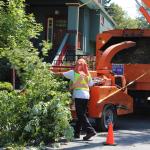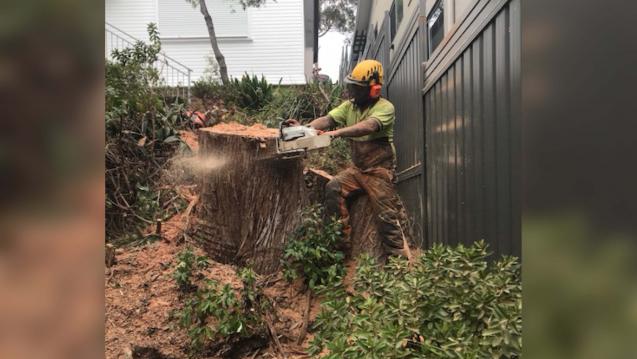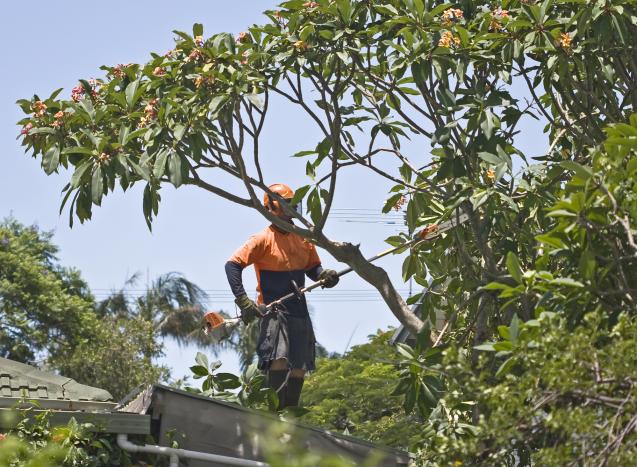
The Indispensable Tools for a Successful Tree Removal Process
By Wolf Trees and Gardens|November 22, 2023
Tree removal – a seemingly daunting task requiring not just significant manpower but also the appropriate equipment. Procuring the right tools for this task goes a long way in ensuring its successful completion. This comprehensive guide is designed to take readers through the essentials of a successful tree removal process, starting from understanding the basics, followed by a highlight on safety gear, a study of the primary hand tools required, to the use of heavy-duty equipment, and finally, disposing of the tree responsibly.
Understanding the Basics of Tree Removal
Tree removal is typically the last resort when dealing with trees that pose safety risks or are affected by disease. Various factors, including the tree's size, location, health, and proximity to structures, determine the need for tree removal. Safety remains at the top of the priority list, with a keen focus on avoiding injuries and property damage. Lastly, legal considerations have a significant role in this process, with different regions having specific rules and regulations, so it’s best to research these before proceeding.
Highlighting the Importance of Safety Gear
Safety gear, in the context of tree removal, acts as the first line of protection against potential accidents. Missteps during this process can lead to severe injuries, many of which can be avoided with proper safety gear. Essential protective gear includes sturdy helmets to protect against falling branches, gloves to improve grip and prevent cuts, and boots, preferably steel-toed, for foot protection. Effective use of safety gear involves regular maintenance and immediate replacement of any worn-out pieces.
Examination of Essential Hand Tools for Tree Removal
Investing in quality hand tools can make an otherwise strenuous task much more manageable. Chainsaws, for instance, are essential for cutting through thicker branches and trunks, while pruning saws are better suited for medium-sized branches that a chainsaw might be too large for. Hand pruners, on the other hand, are perfect for cutting smaller branches and twigs. Quality brands, such as Stihl and Husqvarna, offer excellent durability and performance. Regular cleaning and proper storage of these tools can drastically extend their lifespan.
The Significance of Heavy-Duty Equipment in Tree Removal
At times, the task at hand might be too difficult to tackle with just hand tools. In such cases, heavy-duty equipment becomes essential. Stump grinders, for instance, can remove leftover stumps after tree felling, while wood chippers help reduce branches into small chips. For larger tasks, a loader is often a worthy investment. However, due to the complexity of operating this machinery, it might be beneficial to consider hiring professionals. Remember, if you ever find yourself using heavy-duty equipment, adhering strictly to safety protocols cannot be overemphasised.
Tips on How to Properly Dispose of Removed Trees
Disposing of trees responsibly after they have been removed is as essential as the removal process itself. Eco-friendly disposal methods, such as chipping or composting, prevent unnecessary landfill waste and contribute to the circular economy ethos. Recycling plays a vital role, with wood chips from the removed trees possibly being used in landscaping or as a foundation for walkways. Adhering to local regulations about tree disposal helps avoid potential legal ramifications and preserves the health of our environment.
Conclusion
Taking on a tree removal process requires more than just a skilled arborist. As this guide has outlined, understanding the basics, adhering to safety considerations, using the appropriate tools, and disposing of the tree responsibly are all parts of this complex process. However, it's crucial to remember that professionals are always available to help if the task seems beyond your capabilities. Have any comments or questions? Feel free to share – we're always happy to help.
Understanding the Basics of Tree Removal
Tree removal is typically the last resort when dealing with trees that pose safety risks or are affected by disease. Various factors, including the tree's size, location, health, and proximity to structures, determine the need for tree removal. Safety remains at the top of the priority list, with a keen focus on avoiding injuries and property damage. Lastly, legal considerations have a significant role in this process, with different regions having specific rules and regulations, so it’s best to research these before proceeding.
Highlighting the Importance of Safety Gear
Safety gear, in the context of tree removal, acts as the first line of protection against potential accidents. Missteps during this process can lead to severe injuries, many of which can be avoided with proper safety gear. Essential protective gear includes sturdy helmets to protect against falling branches, gloves to improve grip and prevent cuts, and boots, preferably steel-toed, for foot protection. Effective use of safety gear involves regular maintenance and immediate replacement of any worn-out pieces.
Examination of Essential Hand Tools for Tree Removal
Investing in quality hand tools can make an otherwise strenuous task much more manageable. Chainsaws, for instance, are essential for cutting through thicker branches and trunks, while pruning saws are better suited for medium-sized branches that a chainsaw might be too large for. Hand pruners, on the other hand, are perfect for cutting smaller branches and twigs. Quality brands, such as Stihl and Husqvarna, offer excellent durability and performance. Regular cleaning and proper storage of these tools can drastically extend their lifespan.
The Significance of Heavy-Duty Equipment in Tree Removal
At times, the task at hand might be too difficult to tackle with just hand tools. In such cases, heavy-duty equipment becomes essential. Stump grinders, for instance, can remove leftover stumps after tree felling, while wood chippers help reduce branches into small chips. For larger tasks, a loader is often a worthy investment. However, due to the complexity of operating this machinery, it might be beneficial to consider hiring professionals. Remember, if you ever find yourself using heavy-duty equipment, adhering strictly to safety protocols cannot be overemphasised.
Tips on How to Properly Dispose of Removed Trees
Disposing of trees responsibly after they have been removed is as essential as the removal process itself. Eco-friendly disposal methods, such as chipping or composting, prevent unnecessary landfill waste and contribute to the circular economy ethos. Recycling plays a vital role, with wood chips from the removed trees possibly being used in landscaping or as a foundation for walkways. Adhering to local regulations about tree disposal helps avoid potential legal ramifications and preserves the health of our environment.
Conclusion
Taking on a tree removal process requires more than just a skilled arborist. As this guide has outlined, understanding the basics, adhering to safety considerations, using the appropriate tools, and disposing of the tree responsibly are all parts of this complex process. However, it's crucial to remember that professionals are always available to help if the task seems beyond your capabilities. Have any comments or questions? Feel free to share – we're always happy to help.



